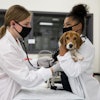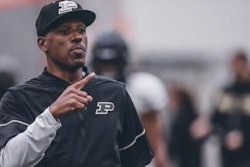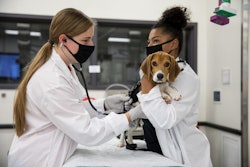 Kayla Dio Robinson, at NASA.
Kayla Dio Robinson, at NASA.
Robinson is now a mission telemetry engineer at Kennedy Space Center, working with NASA and its customers to ensure successful communications during missions. While she credits many mentors for help on her journey, Robinson became an engineer under the dual pressures of being a Black woman in a mostly white, male space.
Thursday, Feb. 24 is Introduce a Girl to Engineering Day, a call for institutions to bring more women and more diversity, into the field of sciences, technology, engineering, and mathematics (STEM). According to data gathered by the National Center for Education Statistics, women make up 20% of awarded undergraduate engineering degrees. That number has stagnated, staying within two percentage points since 1999. The field is also a white-dominated space, with 66% of engineers in the workforce identifying as white, according to Georgetown University’s Center on Education and the Workforce.
For scholars who study the methodology behind teaching engineering, bringing more women and diversity into the workforce requires not just a shift in recruitment and marketing but a cultural change as well.
Dr. Joachim Walther, founding director of the Engineering Education Transformations Institute (EETI) at the University of Georgia, teaches a course called Engineered Systems in Society. The course is required for all mechanical engineering majors and asks students to role-play in imaginary, real-world situations.
“There’s a necessity to reshape engineering as a profession in the world,” said Walther. “At the heart of [it], engineering is a social, technical endeavor that is inherently humanistic and has to do with working with people in ways that acknowledge other sources of knowledge.”
Students often come to engineering to “save the world,” said Walther. His class allows them to encounter engineering as it intersects with society, offering students “revelations” even after they graduate.
















